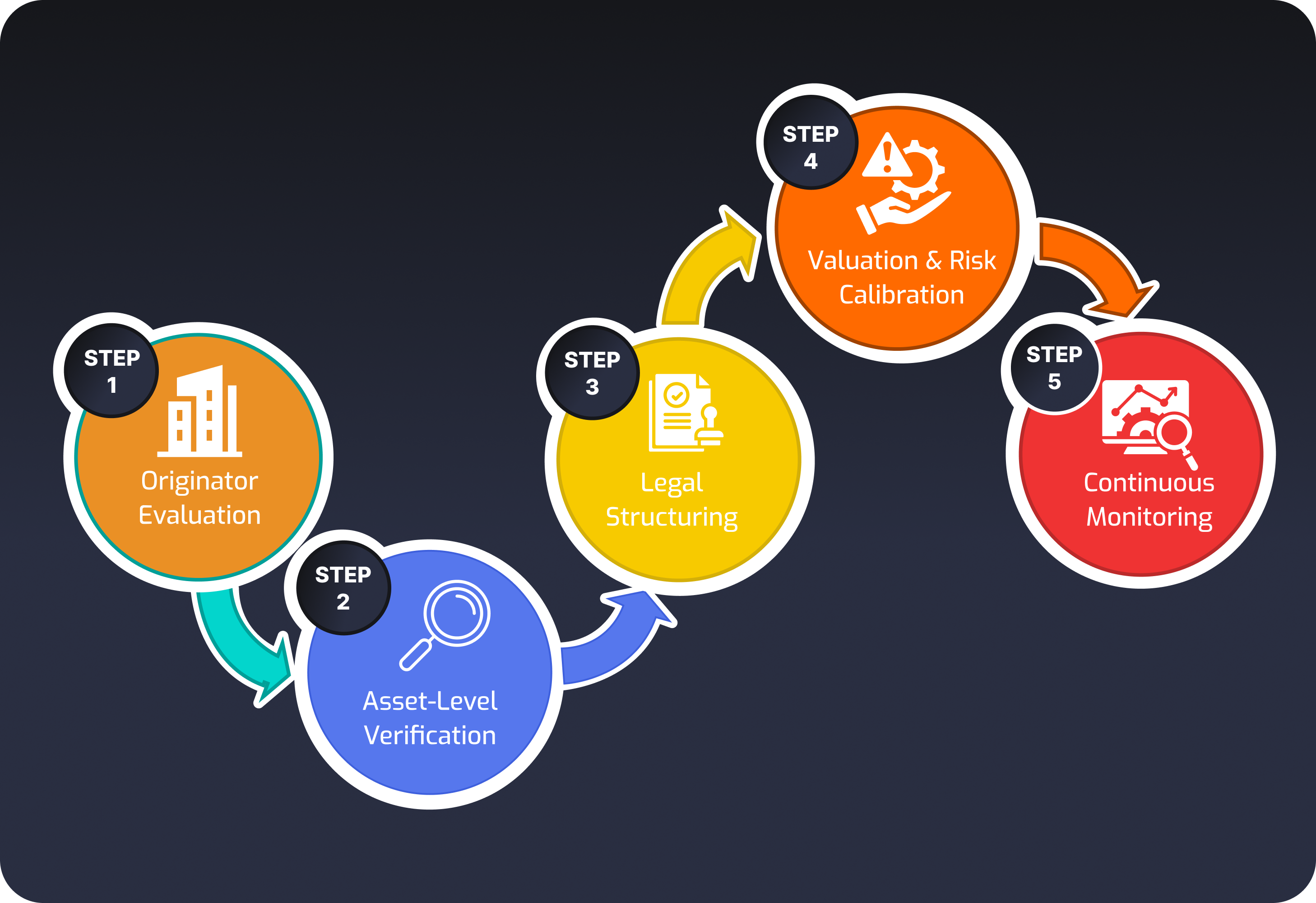Asset Selection & Due-Diligence Framework
At Karpous, we don't list assets. We curate them. Each investment opportunity undergoes a rigorous, institutional-grade due-diligence process before it ever reaches the platform. Our framework ensures that every project—whether a logistics fleet, renewable energy hub, or industrial facility meets strict standards of performance and legal validity. We combine the discipline of traditional finance with the efficiency of modern digital infrastructure to create an ecosystem where yield is not only accessible but also trustworthy.
The Selection Philosophy
We believe that good yield is born from good structure and good structure begins with verified fundamentals. At Karpous, every opportunity is evaluated through dual-layer due diligence analyzing both the company and the asset itself. A profitable company does not always mean a profitable asset, so we also assess the asset's yield independently from corporate performance.
We ensure that:
Each operator has 3–5 years of proven expertise, measurable market share, have the reputation of good governance, and is in good legal and financial standing.
Each asset is profitable, compliant, and operationally viable, with clear, verifiable yield parameters.
Our due diligence rests on three foundational pillars:
Step-by-Step Due-Diligence Process

Step 1
Originator Evaluation
Before assessing the asset, we assess the originator.
Corporate standing and registration.
Financial stability (audited financials, debt ratios).
Operational history (years active, management experience).
Legal background (litigation history, regulatory compliance).
Karpous partners only with established, reputable operators with proven track records in their sectors.
Step 2
Asset-Level Verification
Each asset is analyzed individually based on its yield structure and operational model.
We review:
Cash-flow projections and historical performance.
Collateralization and asset ownership documentation.
Supply or revenue contracts backing performance.
Maintenance and insurance coverage.
Exit or resale options.
We engage third-party auditors or valuation firms where necessary to validate asset data and ensure independence.
Step 3
Legal Structuring
Once an asset passes initial verification, Karpous works with specialized legal counsel to establish a Special Purpose Vehicle (SPV) or trustee-based holding structure, depending on jurisdiction.
This ensures:
Clear ownership segregation between the operator and investor.
Defined rights of redemption or yield participation.
Regulatory compliance under applicable securities and digital asset frameworks.
The legal layer guarantees that investors' claims on assets are enforceable and transparent.
Step 4
Valuation & Risk Calibration
Before issuance, assets undergo an independent valuation to determine fair market value and expected yield parameters.
This process includes:
Market comparison benchmarking (sector yield, price, and term).
Sensitivity modeling for operational and market variables.
Stress testing for currency fluctuation, demand, and default risks.
Each asset's expected yield and floor protection are derived from this analysis and disclosed in its Edition Fact Sheet.
Step 5
Continuous Monitoring
Due diligence doesn’t end at issuance and it continues in the governance. Karpous employs continuous monitoring mechanisms for both assets and operators:
This process includes:
Periodic reporting from operators (monthly or quarterly).
Automated data feeds for on-chain yield tracking and verification.
Independent review triggers for any anomalies in performance.
Results are summarized in Performance Dashboards for Karpous to ensure that the assets ownership is in good standing.
Fact Sheet Transparency
Every investment opportunity comes with a Fact Sheet that outlines:
Asset overview and yield structure.
Legal setup and custodial arrangements.
Operator and jurisdictional information.
Valuation methodology and risk disclosures.
Duration, floor yield, and upside range.
Each Fact Sheet serves as both a disclosure document and a performance reference, aligning with institutional transparency standards.